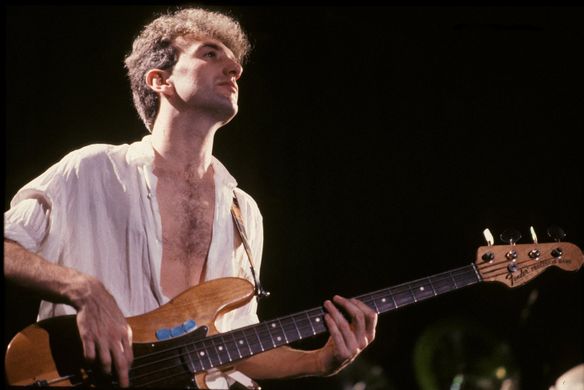This song (hopefully) needs very little by way of introduction; ‘Bohemian Rhapsody’ was a huge critical and commercial success for Queen, remaining their biggest-selling single (and, indeed, the UK’s third-best-selling single of all time). A sprawling, six-minute progressive pop odyssey that blends genres and defies convention, ‘Bohemian Rhapsody’ remains a landmark in pop music history and a testament to the band’s unique songwriting abilities. Enough of that: what about the bass?
Deacon’s Bohemian Bass Part
As you might expect, writing down John Deacon’s ‘Bohemian Rhapsody’ bass part proved to be not particularly straightforward. Firstly, the song structure (or lack thereof) is not a typical 16-bar verse/chorus/bridge affair, which meant that creating a ‘reader friendly’ chart was difficult. Secondly, there are numerous changes of key, tempo and meter to navigate. Thirdly, Roger Taylor’s enthusiastic tom-thumping made it very difficult to isolate certain portions of the bass part. Anyway, enough excuses…
Queen – ‘Bohemian Rhapsody’ bass transcription PDF
Some aspects of the transcription benefit from an explanation, so below are some comments to clarify certain notational choices that I’ve made:
Some Notes (on some notes)
• The first four bars of the chart may appear that I’ve gone insane: four changes of meter? Even though the time feel is distinctly rubato here, I felt like I needed to give each phrase as much rhythmic accuracy as possible, particularly bar three’s uneven phrasing.
• The first two verses (bars 17-46) are entirely straightforward, but I’ve tried to provide as much detail on note length as possible. There are also some unnecessary-looking ties on notes which end in slides – these are to help you to know how long to hold the pitch before sliding.
• The ‘opera’ section beginning at bar 55, is peppered with bars of 2/4, the precise locations of which are not an exact science. The ‘bismillah’ call-and-response section (starting at bar 76) is easy to play because most people know the song so well, but it took numerous attempts at writing down in numerous meter combinations before I could believe that it actually does stay in 4/4 for the entire time.
• There’s a shift in subdivisions leading up to the unison section at bar 97, which has a definite ‘shuffle’ feel. I felt that 12/8 was slightly easier to read than staying in 4/4 and bombarding the reader with triplets. The syncopated rhythms of bar 101 onwards are tricky to catch on the first (or second) read-through, so take your time and break the bar down into the four main beats first.
• Bar 118 features a sequence of three ascending tones that then moves up in tones; if you’ve ever played any sort of whole tone scale-type vocabulary before, you’ll know that it’s a real pain on the bass because it doesn’t fit neatly in any one position on the fretboard.
• The final F notated in the transcription doesn’t appear on the record. This is purely so you can resolve the tune properly if it comes up on a gig.

